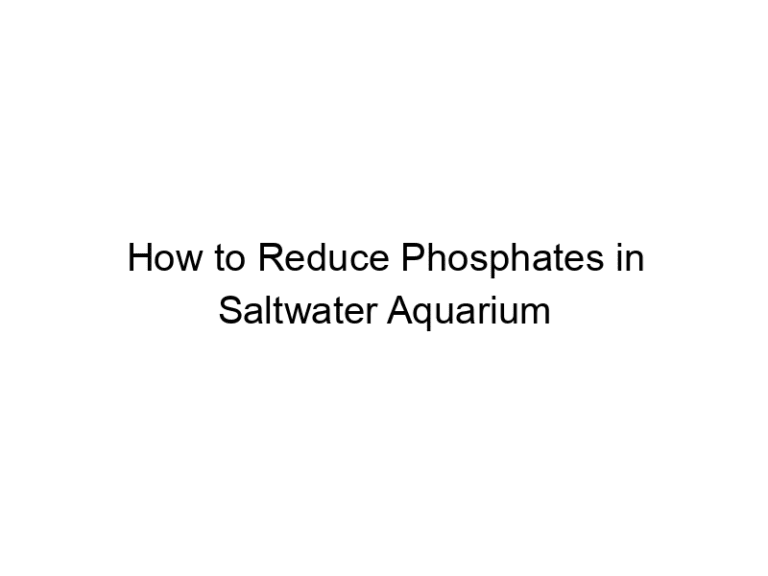In a saltwater aquarium, phosphates can sneak in through various sources like food, water, and waste. If left unchecked, these phosphates can turn your beautiful tank into an algae haven, making it difficult to maintain. Fortunately, there are several effective ways to lower phosphate levels and keep your aquarium thriving.
This guide will help you understand the causes of high phosphates and provide practical steps to reduce them. By following these tips, you can ensure a clean, healthy, and vibrant saltwater aquarium that both you and your marine friends will love.
Reduce Phosphates In Saltwater Aquarium
Phosphates in a saltwater aquarium can lead to unwanted algae growth and harm marine life. To keep phosphate levels low, start with using purified water for your tank. Tap water often contains high levels of phosphates. Regularly change a portion of the water, around 10-20% weekly, to keep it clean.
Adding a protein skimmer helps remove organic waste before it breaks down into phosphates. Consider using phosphate-removing media in your filtration system. These media absorb phosphates and keep levels down. Feed your fish sparingly and remove uneaten food quickly. Overfeeding increases waste, which turns into phosphates.
Test your water frequently to monitor phosphate levels. Keeping your aquarium clean and maintaining good water quality ensures a healthy environment for your marine life.
Frequently Asked Questions
How To Lower Phosphate Levels In A Saltwater Tank?
Reduce feeding, perform regular water changes, and use phosphate-absorbing media. Clean your tank and equipment often. Add macroalgae to absorb excess phosphates.
What Causes High Phosphate In A Saltwater Aquarium?
High phosphate in a saltwater aquarium is caused by overfeeding, decaying organic matter, poor water quality, and insufficient filtration. Regular water changes, proper feeding, and effective filtration help manage phosphate levels.
What Is The Best Phosphate Remover For Saltwater Aquariums?
The best phosphate remover for saltwater aquariums is GFO (Granular Ferric Oxide). It effectively reduces phosphate levels and promotes a healthy environment.
Do Protein Skimmers Reduce Phosphates?
Protein skimmers primarily remove organic waste from aquarium water. They do not directly reduce phosphates. However, by removing organic waste before it breaks down, they can indirectly help maintain lower phosphate levels. Regular maintenance and other filtration methods are also essential for controlling phosphates effectively.
Conclusion
Reducing phosphates in your saltwater aquarium is crucial for a healthy environment. Regular water changes help maintain low phosphate levels. Use a high-quality protein skimmer for efficient waste removal. Consider adding phosphate-removing media to your filtration system. Test your water frequently to monitor phosphate levels.
Feed your fish responsibly to avoid excess food waste. Avoid overstocking your tank to reduce waste. Proper maintenance and care can keep your aquarium thriving. Remember, a balanced tank benefits all marine life.






1 thought on “How to Reduce Phosphates in Saltwater Aquarium”